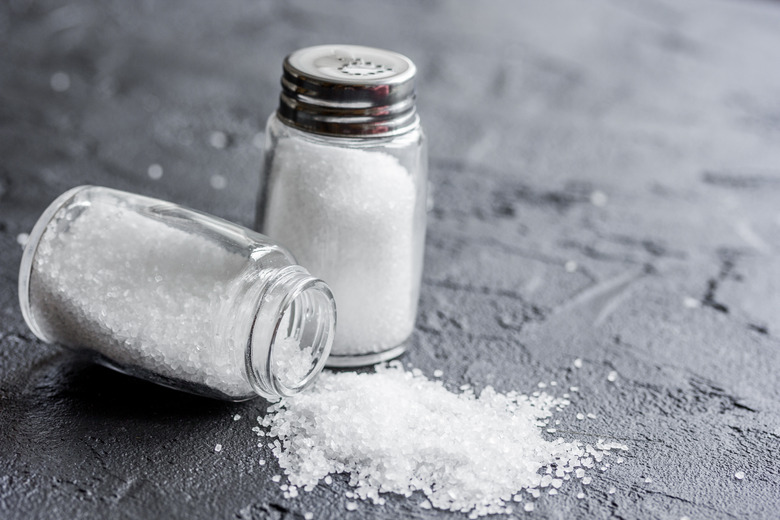What Is A Monatomic Ion?
Atoms are the building blocks of matter. According to the planetary model, each one is composed of a nucleus of positive protons surrounded by a cloud of negative electrons. When the number of protons and electrons is the same, the atom has no electric charge, although it does still have a tendency to combine with other atoms to achieve a stable outer shell of electrons. When the atom combines with another to form an ionic compound, it loses or gains one or more electrons and becomes an electrically charged ion. Single atoms in this state are called monatomic ions. Combinations of atoms with one or more missing or extra electrons are called polyatomic ions.
Examples of Monatomic Ions
Examples of Monatomic Ions
Common table salt is a familiar example of how monatomic ions behave. The monatomic ions that compose salt are sodium (Na+) and chlorine (Cl-). In the solid state, the sodium and chlorine atoms form into a crystal structure in which each sodium atom is surrounded by chlorine atoms and vice versa. When salt dissolves in water, the structure separates into Na+ and Cl- ions. Because the ions are charged, the solution becomes capable of conducting electricity. In other words, it becomes an electrolyte.
Other examples of monatomic ions include oxygen (O22-), which can form when a lightning ionizes the air during a thunderstorm. If nitrogen ionizes during the same storm, it has a charge of plus three (N+3). All of these are monatomic ions, even though they have a charge that is more than 1, because they are composed of a single atom. An ion with a positive charge, such as Na+, is called a cation, while one with a negative charge, such as Cl-, is an anion.
Examples of Polyatomic Ions
Examples of Polyatomic Ions
Atoms can combine to form ionic compounds. A classic example is the hydronium ion (H3O+), which forms when you dissolve an acid in water. Ammonium (NH4+) is another important polyatomic ion with a single charge. Both of these are cations. Examples of single-charge polyatomic anions include hydroxide (OH-), which combines with hydronium in acid-base reactions to form water, and nitrate (NO3-). There are many examples of multi-charge polyatomic ions, including carbonate (CO32-), sulfate (SO42-) and phosphate (PO43-).
Cite This Article
MLA
Deziel, Chris. "What Is A Monatomic Ion?" sciencing.com, https://www.sciencing.com/what-is-a-monatomic-ion-13712165/. 13 May 2018.
APA
Deziel, Chris. (2018, May 13). What Is A Monatomic Ion?. sciencing.com. Retrieved from https://www.sciencing.com/what-is-a-monatomic-ion-13712165/
Chicago
Deziel, Chris. What Is A Monatomic Ion? last modified March 24, 2022. https://www.sciencing.com/what-is-a-monatomic-ion-13712165/
